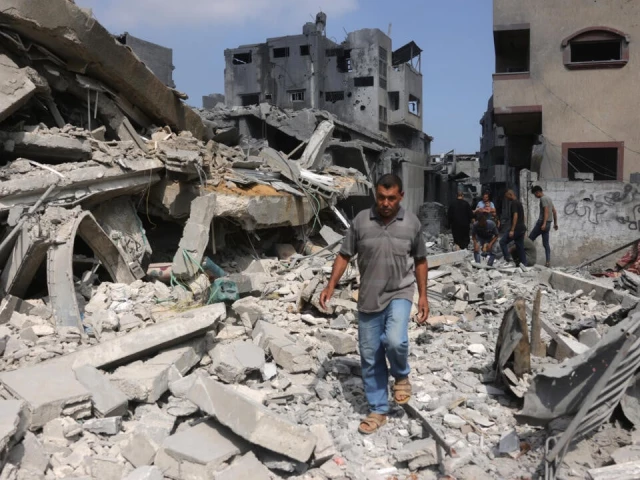At least 41 Palestinians lost their lives in the latest Israeli strikes in Gaza, marking another deadly chapter in the ongoing conflict. Medical sources confirmed that several air raids across the besieged enclave on Saturday left more than 100 others wounded, many critically. Among the dead were 12 people who had gathered in hopes of receiving food aid before being struck.
Deadly Day in Gaza
Hospital officials reported multiple strikes targeting neighborhoods and aid distribution zones across the Gaza Strip. Emergency responders rushed to evacuate the wounded, while fears grew that the death toll could rise further due to the severity of injuries.
A medic working at one of the local hospitals described the scene as “utter chaos,” adding that the influx of casualties was overwhelming the already fragile healthcare system. Some victims were reportedly buried under rubble, with rescue efforts continuing late into the evening.
Aid Seekers Among the Victims
Twelve of those killed were reportedly standing in line for food aid when Israeli warplanes targeted the area. These incidents have reignited criticism of the humanitarian situation in Gaza, where the population continues to face extreme shortages of food, water, and medical supplies.
According to aid workers, many in Gaza now spend hours searching for food or medical help. Attacks near aid points further limit relief operations, raising concerns among humanitarian agencies.
Read: Israeli Strike on Catholic Church in Gaza Triggers Global Condemnation
Trump Claims More Hostages to Be Freed
Meanwhile, U.S. President Donald Trump announced on Friday night that 10 more Israeli hostages will be released “very shortly.” Speaking during a dinner at the White House with lawmakers, Trump credited his Middle East envoy Steve Witkoff for ongoing efforts behind the scenes.
“We got most of the hostages back. We’re going to have another 10 coming very shortly,” Trump said, though he offered no specific timeline or further details. His remarks added to a series of earlier claims that a broader ceasefire and hostage release deal could be close—yet no formal agreement has emerged so far.
High Civilian Toll Continues
Since the start of Israel’s offensive in Gaza in late October 2023, more than 58,667 Palestinians have been killed, most of them women and children. The unrelenting military campaign has flattened entire neighborhoods, destroyed hospitals, and displaced hundreds of thousands of people.
The health infrastructure in Gaza has collapsed under the pressure, making it nearly impossible to treat the injured or contain outbreaks of disease. Doctors continue to operate in severely under-resourced environments, often without electricity, anesthesia, or proper sanitation.
Legal Scrutiny Mounts
In November, the International Criminal Court (ICC) issued arrest warrants for Israeli Prime Minister Benjamin Netanyahu and former Defense Minister Yoav Gallant. They face accusations of war crimes and crimes against humanity linked to the military campaign in Gaza.
In a separate proceeding, Israel stands accused of genocide at the International Court of Justice (ICJ). These legal actions mark a significant international response to the scale and intensity of Israel’s operations, though Israeli officials have dismissed the accusations as politically motivated.
Calls for International Action
As the humanitarian toll deepens, calls for international intervention continue to grow. Human rights groups are urging stronger diplomatic pressure to end the violence and ensure the delivery of aid to those trapped inside Gaza.
United Nations officials have warned of a looming famine and escalating public health crisis if the blockade and attacks continue. “Gaza is on the brink,” one UN representative said. “Without urgent global action, more lives will be lost—not just from bombs, but from hunger and disease.”
Despite these warnings, no ceasefire has been reached. For now, civilians in Gaza remain caught between bombings and the slow trickle of humanitarian relief, with no end to their suffering in sight.
A Region on Edge
The developments in Gaza are intensifying tensions throughout the Middle East, as regional powers monitor the situation closely. Analysts warn that continued violence may lead to broader instability unless a political resolution is pursued.
While diplomatic efforts are ongoing behind closed doors, the people of Gaza continue to bear the brunt of a conflict that shows no signs of stopping.
Follow us on Instagram, YouTube, Facebook,, X and TikTok for latest updates
